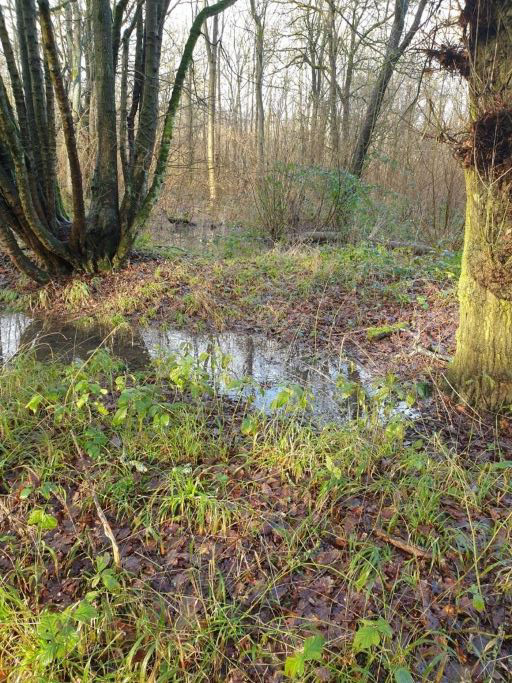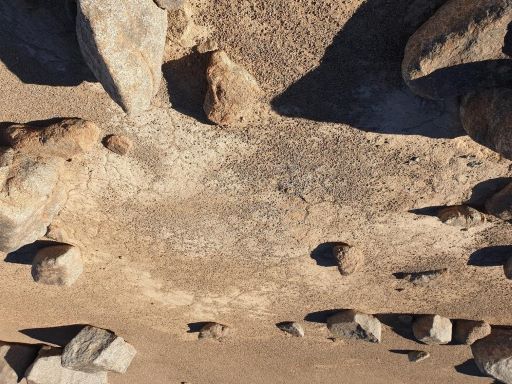2 Why search for water?
As you have seen in Figure 1, two-thirds of the Earth’s surface is covered in water; however, it is not evenly distributed across the globe. For those living in humid climates (such as at The Open University’s campus in Milton Keynes, UK), water can be easily taken for granted until there is a spell of hot weather! When this happens, plants dry up and some may die, but others are remarkably resilient and will spring back to health as soon as rain arrives.
On Earth, there are also regions that are much drier than the UK. Look at photographs in Figure 6 and Figure 7. Both were taken in January and show differences in the availability of water depending on geography and climate.

Life is obvious in Figure 6, with green leaves and even a small insect causing the ripples on the puddle. Figure 7, a photograph taken at the same time of year as Figure 6 but in the Atacama desert, shows no obvious signs of life in this picture, but studies have shown that microbial life is possible even with the extreme lack of water here. Occasionally you can find a tiny burrow or footprints of animals that have adapted to the harsh conditions.
What is clear, therefore, is that even where water is scarce, life can be found. For this reason, the search for life beyond Earth has been intimately linked with the search for water. Indeed, ‘follow the water’ has been NASA’s guiding motto for many years.
But if we’re looking for evidence of water on another planet, what might we be looking for?
-
List as many places as you can think of where water can be found outdoors on Earth?
-
Although most of the Earth’s water is in oceans, you might have also thought of rivers and lakes, puddles, rain, snow, ice, frost, fog, and steam.
-
In your answer, you may have listed forms of water that are liquid, some that are solid, and others are gaseous. Can you organise your list into these three states of matter?
-
Liquid: rivers and lakes, puddles, rain
Solid: ice, snow, frost
Gaseous: steam
Fog cannot easily be organised because it consists of tiny droplets of water or ice that float in the air. For this reason, it may be best described as a ‘suspension’.
There are many forms of water on Earth but, so far, you’ve only heard about ice on Mars. In the next section you will learn more about the properties of water and why it is specifically liquid water that is important for life.

